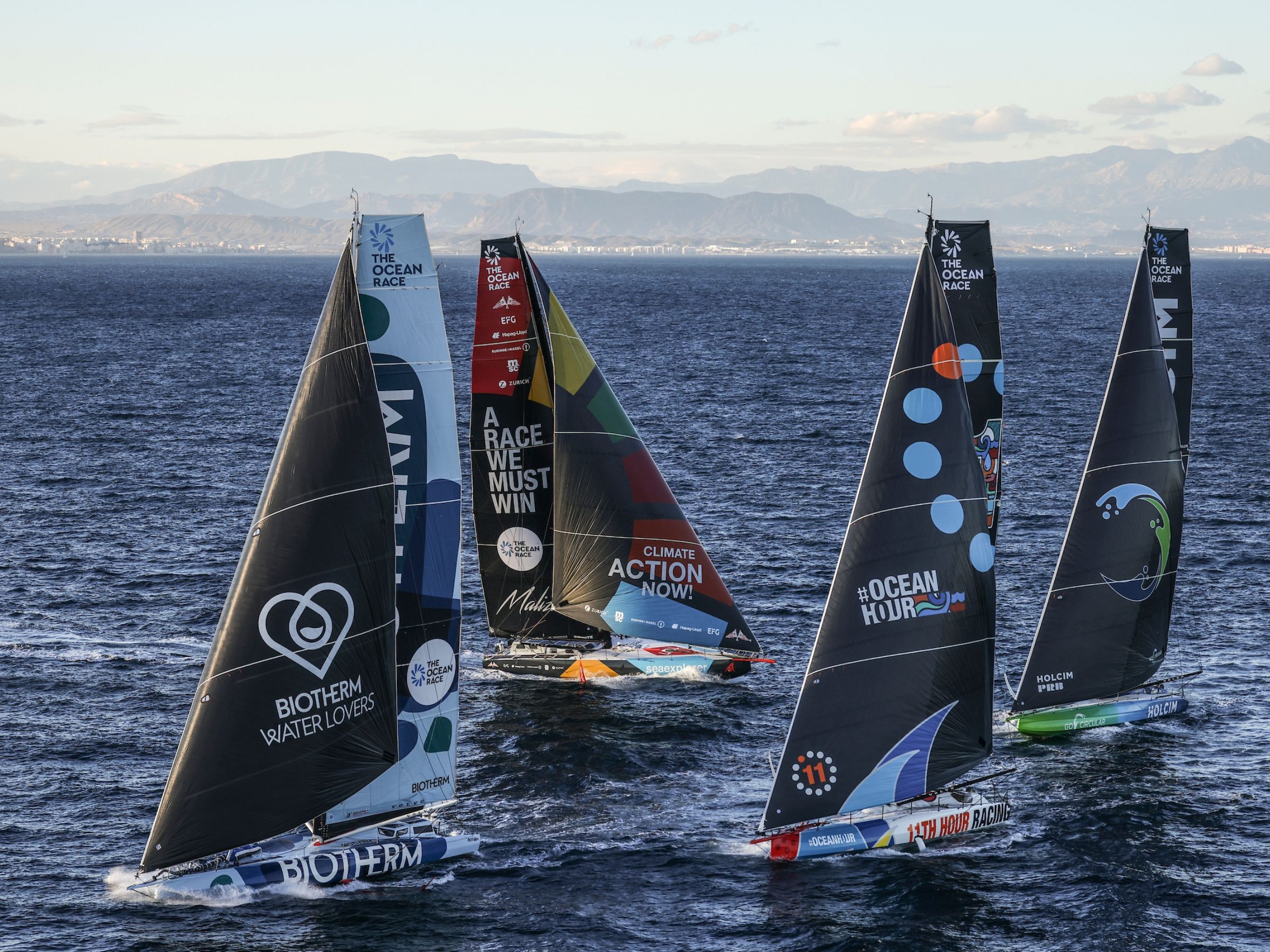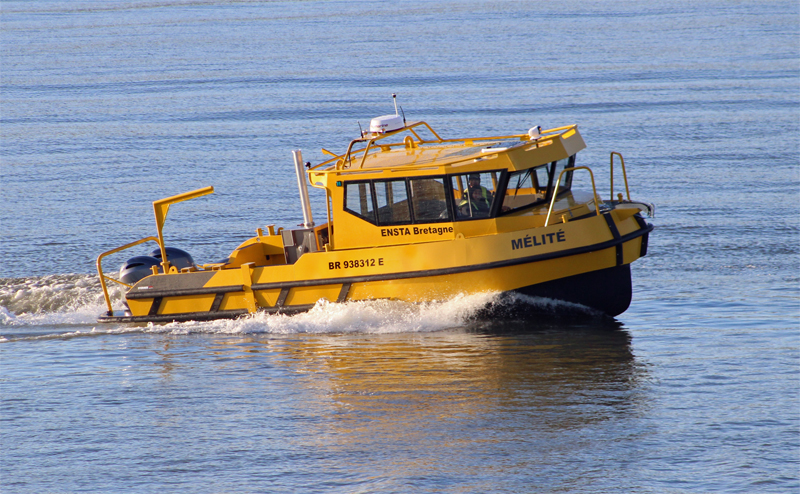Home » EXOS 2024 – A Collaboration to Prevent Collisions
Called “EXOS 2024”, this innovative collaborative R&D project was launched in response to an expression of interest from the IMOCA class organised by the Pole Mer Bretagne Atlantique to prevent collisions at sea. The development of this innovation, which will be able to detect obstacles and avoid them automatically, will be based on the latest technological advances in such diverse fields as Machine Vision (or artificial vision), multi-sensor fusion and automatic piloting. This solution will be compatible with most navigation systems already installed on board.

“As a competitive group, our goal is to stimulate innovation and collaboration within the maritime industry. We are therefore very proud to support this strategic project, which aims to enhance safety at sea. Through this project, which brings together three very active members of the group (PIXEL sur MER, SEA.AI and ENSTA Bretagne), we are convinced that new efficient technological solutions for safety at sea, tailored to the needs of industry, will soon be available.” Phillipe Monbet, Director of POLE MER BRETAGNE ATLANTIQUE
Recognised for its role as a laboratory for innovation, the IMOCA class will be the support and catalyst for this project, whose aims are of interest far beyond ocean racing. As a leading class in the search for solutions to avoid collisions at sea, the IMOCA class is fully committed to this collaborative project alongside PIXEL sur MER and SEA.AI.
“We are delighted to be behind the EXOS 2024 project alongside SEA.AI and PIXEL SUR MER to prevent collisions at sea. Safety at sea is an absolute priority, and we are convinced that this collaboration will help to enhance the safety of our sailors.” Antoine Mermod, President of the IMOCA class
In line with their commitment to innovation and the development of the maritime industry, the Brittany Region and BPI France are providing financial support for the development of this new solution.

SEA.AI’s new technology combines optical and thermal sensors with artificial intelligence to detect all floating objects, day or night, including those that are not detected by radar or AIS. SEA.AI’s artificial intelligence is based on algorithms and learning models that need to be trained on large quantities of annotated maritime images to identify and classify the objects detected. EXOS 2024 will help to diversify this database and enhance the analysis capabilities of this new automatic maritime surveillance system. The fusion of information with other sensors will also improve the accuracy and detection performance of this new technology.
“Avoiding a collision due to information delivered by our SEA.AI systems is one of the major interests of our innovation. Our involvement in the ocean racing ecosystem in Brittany and our collaboration with PIXEL sur MER and ENSTA Bretagne will enable us to achieve this quickly. This project is a great accelerator!” Gaëtan Gouérou, Co-founder of SEA.AI
Today, the wide range of sensors onboard boats deliver information that is crucial to the crews for their performance and safety at sea: speed, positioning, the external environment etc. But to exploit the full potential of these sensors, there is a real challenge in the fusion of this data. The aim is to provide more accurate and reliable information, by combining and exploiting the complementary nature of the data from each sensor. PIXEL sur MER fulfills this essential role by merging data from SEA.AI and various existing obstacle detection technologies, such as radar and AIS. The idea is also to create a technology that can be updated to incorporate new detection systems that may appear in the future, particularly for underwater detection. This data fusion technology operated by PIXEL on MER is of key importance for the creation of an effective automatic avoidance system.
“Sailing races have always been a source of innovation for PIXEL sur MER, and taking on this challenge was an obvious choice for us. Our expertise in data fusion and systems automation enables us to play a key role in the development of a solution that can go from detection to automated instructions to be the pilot for obstacle avoidance. It’s also a fantastic opportunity to work alongside leading players and prevent collisions at sea.” Vincent Drévillon, Director of Scientific Programmes at PIXEL sur MER, the company driving the EXOS 2024 project.

PIXEL sur MER and ENSTA Bretagne will be joining forces to develop advanced algorithms that will enable collision avoidance trajectories to be calculated quickly and accurately, giving the crew an instant and safe response to imminent collision situations. The solution is being developed in collaboration with the ROBEX research team, which is specialised in autonomous robotics for marine exploration. It will make navigation safer by automatically changing the boat’s heading as soon as an obstacle is detected.
“Our commitment to the research and development of advanced maritime and robotic technologies, particularly autonomous technologies, will enable us to make a significant contribution to the design and development of the obstacle avoidance system. We are delighted to be working closely with PIXEL sur MER and SEA.AI to achieve this common goal. A post-doctoral research engineer in robotics has joined us on this project. Sea tests will be able to be carried out with our technical team and on our scientific launch, the brand new boat called Mélité, which was inaugurated in May 2023.” Luc Jaulin, teacher and researcher in autonomous robotics at ENSTA Bretagne, ROBEX team, Lab-STICC laboratory.

The consortium’s aim is to develop a technology that can be used by as many people as possible, due to its ability to connect to the majority of the autopilots on the market. Users will be able to choose whether to activate the avoidance function or not. This additional technological component, provided by PIXEL sur MER, will bring collision prevention at sea to a new level, particularly for solo sailors, who are highly exposed to collisions with UFOs. Autopilots will thus become tools not only linked to performance and comfort, but also to the safety of sailors.
While the primary aim of this innovative collaborative project is to offer skippers in the next Vendée Globe a solution that combines increased awareness with the ability to react when necessary, the ultimate goal is to pave the way for the development of applications that will enhance safety at sea for the benefit of all sailors.
More info about PIXEL SUR MER : www.pixelsurmer.com
More info about ENSTA BRETAGNE : www.ensta-bretagne.fr
More info about IMOCA class : www.imoca.org
More info about the Pole Mer Bretagne Atlantique : www.pole-mer-bretagne-atlantique.com
Este viernes (28 de abril de 2024), la Transat CIC zarpará de Lorient, en el oeste de Francia, hacia Nueva York, en la costa este de EEUU. En esta regata participarán 33 IMOCA, 20 de los cuales están equipados con el sistema de visión artificial SEA.AI.
SEA.AI demostró su visión artificial en la sesión informativa del Caucus Náutico del Congreso el 11 de abril de 2024, en Washington, D.C..
Baltic Yachts, un astillero pionero, integra la tecnología de visión artificial SEA.AI en su gama de opciones innovadoras